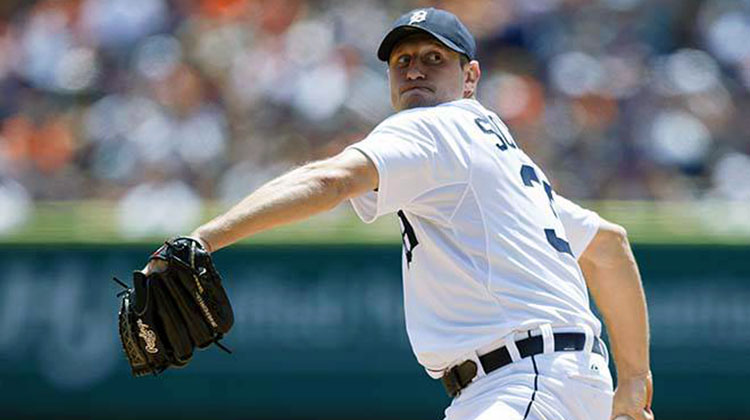 With Spring Training mercifully around the corner, it’s that time of the year when teams start negotiating contract extensions. Clayton Kershaw started off the extension season with a deal that guarantees him $215 million, and the Atlanta Braves recently agreed on a lucrative deal with first baseman Freddie Freeman that will keep him under team control through his age-31 season while guaranteeing him approximately $100 million of new money.
With Spring Training mercifully around the corner, it’s that time of the year when teams start negotiating contract extensions. Clayton Kershaw started off the extension season with a deal that guarantees him $215 million, and the Atlanta Braves recently agreed on a lucrative deal with first baseman Freddie Freeman that will keep him under team control through his age-31 season while guaranteeing him approximately $100 million of new money.
Here are some players that are good candidates for contract extensions before the season begins.
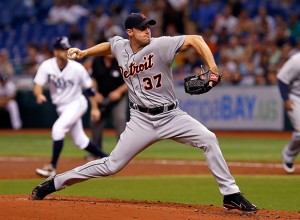 Max Scherzer – When the Detroit Tigers traded away Doug Fister in what can best be described as a fleecing by the Washington Nationals and General Manager Mike Rizzo, it became apparent that they would focus on locking up CY Young winner Max Scherzer.
Max Scherzer – When the Detroit Tigers traded away Doug Fister in what can best be described as a fleecing by the Washington Nationals and General Manager Mike Rizzo, it became apparent that they would focus on locking up CY Young winner Max Scherzer.
In 2013, he headlined a Tigers pitching staff that broke the major league record for strikeouts in a season, as he pitched to a career-best 2.74 ERA and 6.4 fWAR, on his way to capturing 28 of the 30 first-place votes in the AL CY Young voting. He’s just one year from free agency, and after seeing the bidding for Masahiro Tanaka, he may decide to test the waters.
 Miguel Cabrera – Just last year, the Tigers locked up Justin Verlander to a long-term deal that involved five years and $140 million of new money. Scherzer doesn’t have his rotation mate’s track record, but given the current rate of inflation in free agent salaries, a contract extension could approach Verlander territory.
Miguel Cabrera – Just last year, the Tigers locked up Justin Verlander to a long-term deal that involved five years and $140 million of new money. Scherzer doesn’t have his rotation mate’s track record, but given the current rate of inflation in free agent salaries, a contract extension could approach Verlander territory.
Besides worrying about a Scherzer extension, the Tigers also have to deal with Miguel Cabrera‘s impending free agency. Shortly after trading for Cabrera in the 2007-08 offseason, the Tigers inked him to an eight year deal worth $152 million.
Now, the reigning AL MVP has just two years and $44 million left on that deal. If the Tigers don’t extend him, he’ll hit free agency at 32, a point at which he would likely have enough gas in the tank to procure another long-term deal. Mike Trout is the better all-around player, but Cabrera is the game’s best hitter, and a move to first base should increase his value and his health.
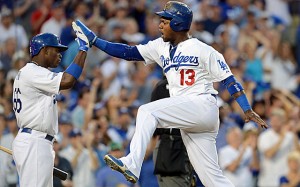 Hanley Ramirez – It was just last season that the baseball world had seemingly given up on Hanley Ramirez as a superstar. From 2011-12, he hit a very mediocre .252/.326/.416 while playing below-average defense. His 3.9 fWAR put him on the same footing as Alcides Escobar, a far cry from his first five seasons when his 28.2 fWAR marked him as the premier shortstop in baseball and one of baseball’s five best players.
Hanley Ramirez – It was just last season that the baseball world had seemingly given up on Hanley Ramirez as a superstar. From 2011-12, he hit a very mediocre .252/.326/.416 while playing below-average defense. His 3.9 fWAR put him on the same footing as Alcides Escobar, a far cry from his first five seasons when his 28.2 fWAR marked him as the premier shortstop in baseball and one of baseball’s five best players.
Fast forward to 2013, and Ramirez produced one of the best seasons ever by a shortstop, albeit in only 86 games. He hit .345/.402/.638 with 20 home runs for a 191 wRC+ and 5.1 fWAR. When he was on the field, he was the best player in baseball. The Los Angeles Dodgers and their seemingly endless stream of cash are intent on locking him up long-term, and something in the range of $20-25 million per year seems likely.
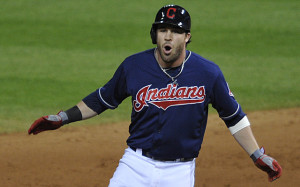 Jason Kipnis – In his last pre-arbitration year, Jason Kipnis established himself as one of the top five second basemen in baseball. Improving on a solid 2012 season, the 26 year-old hit .284/.366/.452 for a 130 wRC+ and 4.5 fWAR as the Cleveland Indians were a surprise playoff team. Among second sackers, only Matt Carpenter and Robinson Cano had a higher wRC+.
Jason Kipnis – In his last pre-arbitration year, Jason Kipnis established himself as one of the top five second basemen in baseball. Improving on a solid 2012 season, the 26 year-old hit .284/.366/.452 for a 130 wRC+ and 4.5 fWAR as the Cleveland Indians were a surprise playoff team. Among second sackers, only Matt Carpenter and Robinson Cano had a higher wRC+.
Because Kipnis didn’t debut until 24, he isn’t scheduled to hit free agency until he’s about to turn 31. He’s not on the elite level of Cano or Pedroia, and there are plenty of examples of second basemen who faded relatively young. Right now, it looks like he’ll make in the neighborhood of $20 million over his three arbitration seasons, and any additional years will likely cost around $15 million per year.
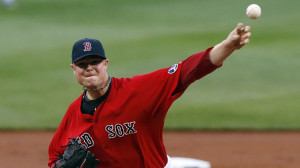 Jon Lester – Jon Lester has publicly stated that he would be willing to take a hometown discount to stay in Boston. After a 2012 season where he posted a 4.82 ERA (though with more encouraging peripherals) he rebounded to a 3.75 ERA with 4.3 fWAR in 2013. In addition, he surrendered just six runs in five postseason starts, helping lead the Sox to a World Series title.
Jon Lester – Jon Lester has publicly stated that he would be willing to take a hometown discount to stay in Boston. After a 2012 season where he posted a 4.82 ERA (though with more encouraging peripherals) he rebounded to a 3.75 ERA with 4.3 fWAR in 2013. In addition, he surrendered just six runs in five postseason starts, helping lead the Sox to a World Series title.
Since beating cancer, Lester has been one of baseball’s most durable pitchers, averaging over 200 innings a year for the past six seasons, and totaling 27.5 fWAR, the 8th highest mark among starting pitchers. Even with a hometown discount, something in the range of five years and $90 million seems a likely price to keep Lester from hitting free agency after the 2014 season.
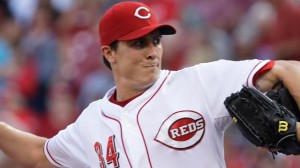 Homer Bailey – After years of being a top pitching prospect Homer Bailey has emerged over the last two seasons. 2013 was especially good, as the 27 year-old righthander had a career-best 3.7 fWAR along with a 23.4 percent strikeout rate.
Homer Bailey – After years of being a top pitching prospect Homer Bailey has emerged over the last two seasons. 2013 was especially good, as the 27 year-old righthander had a career-best 3.7 fWAR along with a 23.4 percent strikeout rate.
With a fastball that averaged 94 miles per hour in 2013 and three secondary pitches, Bailey has excellent stuff, and could potentially make a Scherzer-like leap in 2014.
Though the Reds would like to sign him to an extension, he’s only one year away from free agency and like Scherzer, the Tanaka bidding frenzy might entice him to test the free agent market.
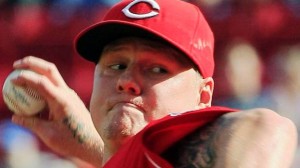 Mat Latos – If the Reds can’t lock up Bailey, they may turn their attention to rotation mate Mat Latos, who turned in an excellent 2013 season, with a 3.16 ERA and 4.4 fWAR.
Mat Latos – If the Reds can’t lock up Bailey, they may turn their attention to rotation mate Mat Latos, who turned in an excellent 2013 season, with a 3.16 ERA and 4.4 fWAR.
The 26 year-old right-hander’s elbow issues down the stretch might be a cause for concern, but overall, he’s been very durable and his fastball velocity and swinging strike rate have been steady.
Latos is two years from free agency, and should command significant money in 2015, his final season of team control. Most likely the Reds will have to settle for either Bailey or Latos, with an extension for one meaning free agency for the other.
These are just some of the extension candidates that are close to free agency. While the Nationals agreed on two-year deals with Jordan Zimmermann and Ian Desmond, they remain players that the club would like to secure long-term, along with pitchers Doug Fister and Stephen Strasburg. Jeff Samardzija and Justin Masterson seem to be at an impasse with their respective teams, but discussions could turn around.
With the escalating prices in free agency, teams are more inclined to spend significant money on younger players. While there is a bit more uncertainty with a player who’s only had one or two good seasons, paying for the prime seasons of a good player is more cost effective than paying for the decline seasons of a superstar.
